Although all the travel agencies in Cusco advertise a 'city tour', very little of it is actually within the city because most of the Inca sites visited are up on the mountain to the north. Our intention had been to hike between these sites but that morning the weather looked very ominous so at the last minute we booked ourselves onto a bus tour (managing to get a very cheap price into the bargain). In the end the threatened rain did not come and we would definitely recommend the hike by taking a cheap public bus out to the furthest site (Tambomachay) and then making the (mostly) downhill hike past each of the sites to end up back in the city.
However, we started with a visit to the Qorikancha complex that is actually within the old city. This was originally an Incan temple of the sun and the name refers to the solid gold capping that once covered the top of all the outer walls. Needless to say, the Spanish removed this some while ago. What the Spanish also chose to do was to build a monastery over the top of the Inca site, incorporating several sections of the temple into their building. So now you can walk through a colonial courtyard and cloisters and into a substantial set of Incan rooms and a sacrificial altar.
In the past these incan walls had been plastered and decorated with Christian images but now they are now stripped back to see the immaculate quality of the stonework. Because this was a very important religious site, the quality of the stonework is extremely high, with each stone carefully and accurately fitting to the next with no spaces between them. This is particularly evident where the monks at one stage decided that they really did not need one of the walls and removed a section. Despite the enormous thickness of the wall, the close fit between stones is clear all the way into the centre; these Incas didn’t just make the fit accurate on the outside!
When you see this quality and the massiveness of the stonework you realise why so much Inca stonework around the city has not been removed but simply incorporated or built on top off. It would be too massive a job to take it down! The wisdom of this is also apparent when you realise that the Incan stonework has managed to survive many earthquakes that have toppled more modern buildings. If you’ve got Incan foundations it’s worth keeping them!
One of the interesting things that we saw here was another version of a picture that we have seen many times already. It is a copy of an old spanish drawing which purports to show 'the inca cosmology' and the interconnection of parts of Incan beliefs. Basically it shows the duality of man/woman, sun/moon as well as a number of key concepts such as water, lightning and the southern cross. However, here the description pointed out that the drawing was actually made over a hundred years after the spanish had conquered Peru and systematically oppressed the Inca religion. So the artist was reliant on hazy recollections passed down through generations. It also noted the resemblance to a Catholic altarpiece and speculated that the artist may well have been interpreting the ideas quite loosely! Nonetheless it appears everywhere else (including elsewhere in Qorikancha) as a factual record!
Next we set out on the route northwards and out of the city, passing our hostel and then going past much more evidence of the recent landslides and fallen rocks in the road. Our first stop was the fortress of Sacsayhuaman, which forms the head of the mythical puma that the aerial view of Cusco is supposed to show (not easily seen now that the city has sprawled in every direction). This site has a series of parallel zigzag terraces made from massive stones (the largest in ancient Peru), many shaped in situ. As usual, the three levels are supposed to represent the three levels of the Incan world; the underworld (snake), our present world (puma) and the higher world (condor).
One recent suggestion is that these are not really so much defensive walls but instead form part of a temple to lightning, although this wasn’t offered by our guide as an explanation. Certainly the site is huge and there are signs of a full-blown city here. It seems that the building work took the best part of a century to complete and a writer soon after it was finished estimated that 20,000 men had been involved in the construction (local legend says that 3,000 lives were lost dragging one single massive stone).
Whatever the original use, the stonework is enormously impressive, particularly with the sunlight bringing out the sharp angles of the zigzags. The massiveness of the stones and the incredibly fine workmanship using no hard metal tools leaves one in awe. Although the site was originally surmounted by three towers, these have long gone; the Spanish having used the site as a relatively easy way to collect stone to build many of the colonial buildings in Cusco. However, the views from the top down to the city remain spectacular.
A little further up the mountain, Q'enqo (the name is derived from a Quechua word for labyrinth) is quite different. Here a rocky outcrop has been carved out into a series of steps, caves, seats and altars that seem to relate to the Incan cosmology which attributes life to all aspects of the earth including rocks. The underground section may well have been used for spiritual contemplation and communication with the forces of the earth. Part of the tunnelled out interior of the site includes a number of niches that may have been used to house the mummies of lesser nobles.
There are also some suggestions that at the summer solstice the sun shines through some ‘windows’ in the rocks onto a particular ‘throne’. Outside the main channelled section lies a semi-circular amphitheatre or perhaps a temple area with a number of seats facing towards a standing stone that shows the shape of a puma’s head (but in the words of an earlier guide ‘you may need to use your imagination’).
Still rising up the mountain, the next significant site is Pukapukara or ‘Red Fort’. This certainly looks like a defensive position, perched on a hill with a commanding view overlooking the Cusco valley. It may therefore have been a guard post between Cusco and the sacred valley. It would certainly be easy to defend on three sides and it has a good view of the Inca road that passes below the tower before taking a diagonal path to ascend the next mountain.
However, it seems a bit small for any substantial garrison, although there are enough grain storehouses here to suggest they wanted to be self sufficient. Another suggestion is that the site was more likely to be some sort of hunting lodge for the Emperor Pachucutec. Thus, in true Inca style, pleasure and comfort for the elite was effectively combined with control of the masses and a bit of useful defence.
Our final stopping point was Tambomachay, which was a temple to water and has an impressive range of fountains. This was evidently a place for ritual purification as well as basic cleansing. The very high quality of the beautiful Inca masonry suggests that it was constructed for the higher nobility, who probably used the site only on ceremonial occasions. We walked up a steep but sheltered gully beside a small stream flowing from a single fountain head and reached an open area flanked by ‘artisan’ sellers.
A little further on, the main part of the ruins is in three tiers (guess what they are supposed to represent). The top tier has three arches, possibly to hold thrones of some kind. From the next level spring water is channelled into a series of fountains down to ground level and away down the gully we had just come up. Of course local legend has imbued the water with mystic powers; it is said to promote fertility and women drinking the water will ensure that they have triplets. Jen immediately took a big gulp (joke). Beside the water feature there is a path leading up to the remains of a small tower, from which you can see Pukapukara, the previous site. This may confirm the belief that these were watchtowers as they would have been able to communicate with each other.
Bathed in the warm glow of the sunset, we made our way back to the city (thank goodness they didn't actually make us sit on a hill waiting for the sun to set, says TP). We finished the day by eating in one of the three cafes called Chez Maggy in the same small street. They do actually seem to belong to the same people although each has a slightly different menu.
However, chores seem to be shared because from time to time meals from one cafe are shuttled up or down the street to a different cafe. As so often happens, we were serenaded during the meal but this time it was different. Rather than the usual 'do two numbers then pass the hat' routine, the musicians really seemed to be enjoying themselves and performed a really long and lively set. Jen was so impressed she bought their CD (but as we have nothing to play it on, it might well be blank for all we know!)
Despite not being able to get to Machu Picchu, we have really enjoyed our time in Cusco. We're off to Arequipa now, but aiming to return later in the year to get another crack at Peru's most popular tourist site.
Visiting the Inca sites around the city.
Tuesday, March 09, 2010
 Cusco, Cusco, Peru
Cusco, Cusco, Peru
Other Entries
-
74Tucumán; chilling out and getting heated!
Jan 0563 days prior San Miguel de Tucumán, Argentinaphoto_camera26videocam 0comment 1
San Miguel de Tucumán, Argentinaphoto_camera26videocam 0comment 1 -
75Like Birmingham but better!
Jan 1058 days prior Córdoba, Argentinaphoto_camera64videocam 0comment 2
Córdoba, Argentinaphoto_camera64videocam 0comment 2 -
76Wines, Bikes, Barnsley and Bernard O'Higgins
Jan 1652 days prior Mendoza, Argentinaphoto_camera45videocam 1comment 1
Mendoza, Argentinaphoto_camera45videocam 1comment 1 -
77Over the Andes to Santiago
Jan 2345 days prior Santiago, Chilephoto_camera95videocam 0comment 8
Santiago, Chilephoto_camera95videocam 0comment 8 -
78Carnival Time in Paradise Valley!
Jan 2741 days prior Valparaíso, Chilephoto_camera89videocam 0comment 6
Valparaíso, Chilephoto_camera89videocam 0comment 6 -
79City of churches, craft stalls and penguins!
Jan 3137 days prior La Serena, Chilephoto_camera55videocam 1comment 1
La Serena, Chilephoto_camera55videocam 1comment 1 -
80More Marys than you can shake a skull stick at.
Feb 0631 days prior San Pedro de Atacama, Chilephoto_camera91videocam 3comment 1
San Pedro de Atacama, Chilephoto_camera91videocam 3comment 1 -
81Mountains, lakes, salt plains & altitude sickness
Feb 0829 days prior Uyuni, Boliviaphoto_camera82videocam 1comment 5
Uyuni, Boliviaphoto_camera82videocam 1comment 5 -
82Dead people, dead trains and dead electrics!
Feb 1027 days prior Uyuni, Boliviaphoto_camera30videocam 0comment 3
Uyuni, Boliviaphoto_camera30videocam 0comment 3 -
83Let the festivities begin (but not in the convent)
Feb 1324 days prior Potosi, Boliviaphoto_camera78videocam 0comment 0
Potosi, Boliviaphoto_camera78videocam 0comment 0 -
84No sugar but lots of water and... dinosaurs!
Feb 1918 days prior Sucre, Boliviaphoto_camera61videocam 0comment 5
Sucre, Boliviaphoto_camera61videocam 0comment 5 -
85Possibly the highest capital city in the world...
Feb 2314 days prior La Paz, Boliviaphoto_camera89videocam 1comment 4
La Paz, Boliviaphoto_camera89videocam 1comment 4 -
86Shining Lake Titicaca (when it isn't raining).
Feb 2611 days prior Copacabana, Boliviaphoto_camera47videocam 1comment 2
Copacabana, Boliviaphoto_camera47videocam 1comment 2 -
87Despite the name, it's not always sunny here!
Feb 289 days prior Isla del Sol, Boliviaphoto_camera51videocam 0comment 0
Isla del Sol, Boliviaphoto_camera51videocam 0comment 0 -
88Incas, Pre-incas and a load of willies.
Mar 054 days prior Puno, Peruphoto_camera113videocam 0comment 0
Puno, Peruphoto_camera113videocam 0comment 0 -
89Road blocks, demos and a scenic journey to Cusco
Mar 063 days prior Cusco, Peruphoto_camera76videocam 0comment 5
Cusco, Peruphoto_camera76videocam 0comment 5 -
90Touring the Sacred Valley
Mar 072 days prior Ollantaytambo, Peruphoto_camera50videocam 0comment 8
Ollantaytambo, Peruphoto_camera50videocam 0comment 8 -
91Visiting the Inca sites around the city.
Mar 09 Cusco, Peruphoto_camera46videocam 0comment 3
Cusco, Peruphoto_camera46videocam 0comment 3 -
92The White City
Mar 167 days later Arequipa, Peruphoto_camera92videocam 0comment 2
Arequipa, Peruphoto_camera92videocam 0comment 2 -
93Strange markings at Dead Bull!
Mar 2314 days later Toro Muerto, Peruphoto_camera32videocam 0comment 0
Toro Muerto, Peruphoto_camera32videocam 0comment 0 -
94Colca Canyon 1: Snow and the Ice Maiden
Mar 2516 days later Chivay, Peruphoto_camera17videocam 0comment 2
Chivay, Peruphoto_camera17videocam 0comment 2 -
95Colca Canyon 2: Watch out, condors about!
Mar 2718 days later Cabanaconde, Peruphoto_camera56videocam 1comment 1
Cabanaconde, Peruphoto_camera56videocam 1comment 1 -
96Colca Canyon 3: Hot and Passionate
Mar 2819 days later Arequipa, Peruphoto_camera21videocam 0comment 0
Arequipa, Peruphoto_camera21videocam 0comment 0 -
97More lines and symbols but this time they're BIG!
Mar 3122 days later Nazca, Peruphoto_camera41videocam 0comment 2
Nazca, Peruphoto_camera41videocam 0comment 2 -
98Sun worshipping through the years
Apr 0426 days later Trujillo, Peruphoto_camera62videocam 0comment 2
Trujillo, Peruphoto_camera62videocam 0comment 2 -
99We go in search of GOLD!
Apr 0729 days later Chiclayo, Peruphoto_camera58videocam 0comment 4
Chiclayo, Peruphoto_camera58videocam 0comment 4 -
100Sun, surf and a very loud children's fairground
Apr 1133 days later Máncora, Peruphoto_camera22videocam 0comment 3
Máncora, Peruphoto_camera22videocam 0comment 3 -
101In search of exotic animals: we find iguanas
Apr 1335 days later Guayaquil, Ecuadorphoto_camera21videocam 0comment 1
Guayaquil, Ecuadorphoto_camera21videocam 0comment 1 -
102We arrive and dive.
Apr 1638 days later Puerto Ayora, Ecuadorphoto_camera64videocam 2comment 1
Puerto Ayora, Ecuadorphoto_camera64videocam 2comment 1 -
103We set sail, eventually.
Apr 1739 days later Bartoleme, Ecuadorphoto_camera46videocam 0comment 4
Bartoleme, Ecuadorphoto_camera46videocam 0comment 4 -
104Iguanas in all their many forms.
Apr 1840 days later Santa Fe Island, Ecuadorphoto_camera32videocam 0comment 3
Santa Fe Island, Ecuadorphoto_camera32videocam 0comment 3 -
105Not all the animals here are friendly.
Apr 1941 days later San Cristobal, Ecuadorphoto_camera8videocam 0comment 1
San Cristobal, Ecuadorphoto_camera8videocam 0comment 1 -
106Albatross, fresh albatross!
Apr 2042 days later Espanola, Ecuadorphoto_camera29videocam 0comment 1
Espanola, Ecuadorphoto_camera29videocam 0comment 1 -
107Jen has mixed feelings about stingrays!
Apr 2143 days later Floreana, Ecuadorphoto_camera11videocam 0comment 1
Floreana, Ecuadorphoto_camera11videocam 0comment 1 -
108That's the way, A-a A-a, I like it!
Apr 2244 days later Isabela, Ecuadorphoto_camera25videocam 1comment 2
Isabela, Ecuadorphoto_camera25videocam 1comment 2 -
109Big Boy Diego struts his stuff and we fly out.
Apr 2345 days later Puerto Ayora, Ecuadorphoto_camera10videocam 0comment 1
Puerto Ayora, Ecuadorphoto_camera10videocam 0comment 1
Comments
2025-05-22
Comment code: Ask author if the code is blank

 Cusco, Cusco, Peru
Cusco, Cusco, Peru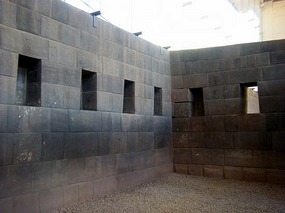
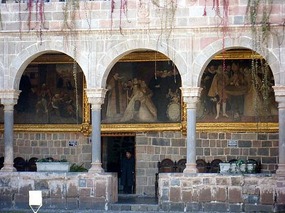
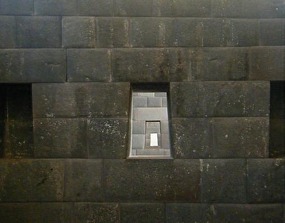
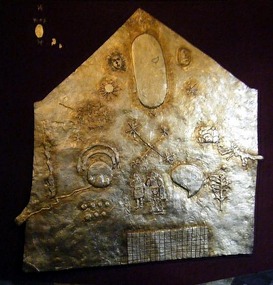
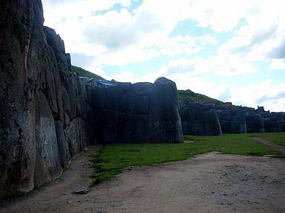
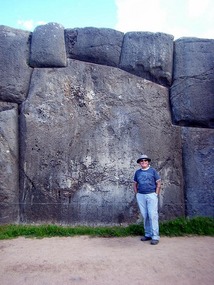
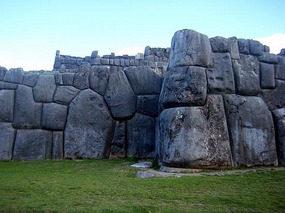
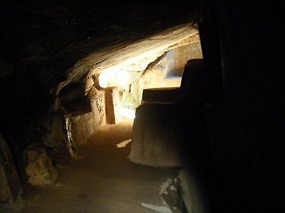
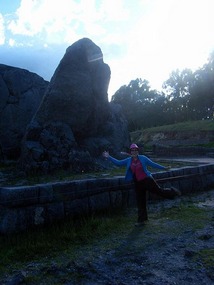
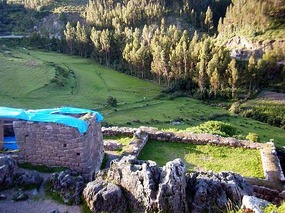
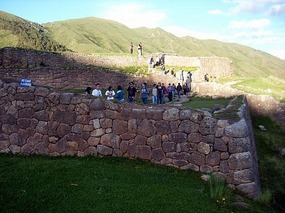
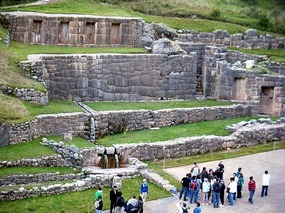
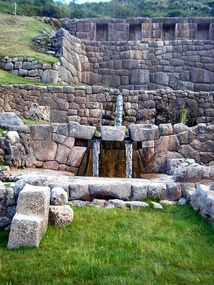

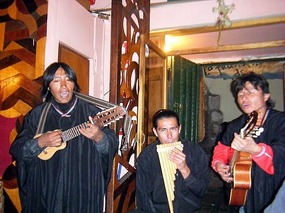





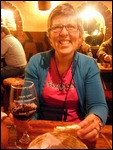

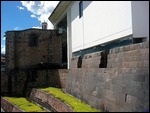
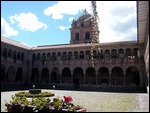
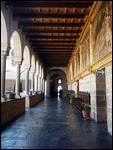
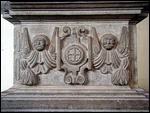
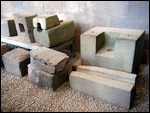
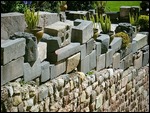

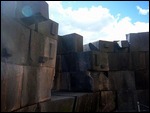
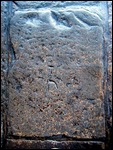
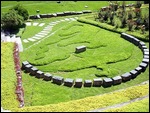

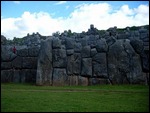

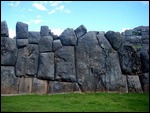
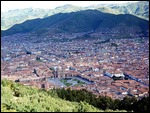
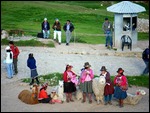
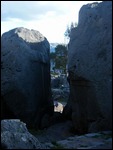
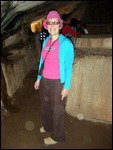
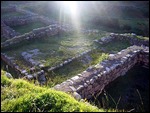
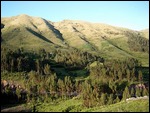
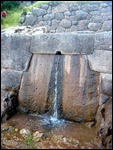
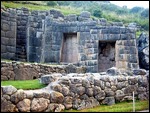
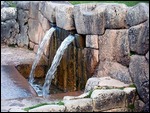
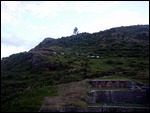

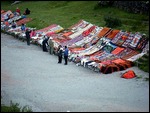
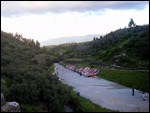
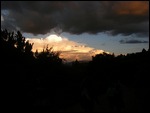
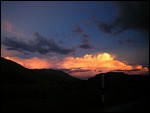
Ruben Gonzalez
2010-03-18
Excelente. Sigan mandando.
Manden a ruben1852@yahoo.com.ar
Meimolesi@gmail.com
jenandtony
2010-03-18
Hola Ruben, fue bueno para escuchar de tu. Hemos puesto los direcciones de email en nuestros contactos.
grindrodkaz
2010-03-22
We enjoyed Chez Maggy and Sacsayhuaman, those huge rocks and no mortar ...